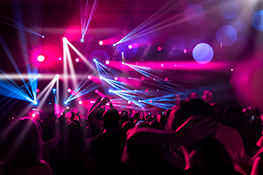Stage Lighting: From Concept to Reality – A Practical Guide
Conceptualizing Your Lighting Design
Before a single bulb illuminates the stage, a compelling lighting design must be conceived. This involves understanding the production’s narrative, mood, and desired aesthetic. Consider the play’s or musical’s themes: is it a lighthearted comedy requiring bright, playful lighting, or a somber drama demanding deep shadows and moody hues? Collaborate closely with the director and set designer to ensure the lighting complements, rather than competes with, other aspects of the production. Develop a lighting plot, a detailed plan outlining the placement and function of each lighting instrument. This document acts as your blueprint, guiding you through the technical aspects of realization. Think about key light sources, backlights for depth, and special effects to enhance specific moments. Remember to factor in the limitations of your venue and available equipment.
Selecting the Right Fixtures
The choice of lighting fixtures significantly impacts the final outcome. Consider the type of light needed: LED, incandescent, or halogen. LEDs offer energy efficiency, vibrant colors, and precise control, making them a popular choice. Incandescent lights provide a warmer, softer light, often preferred for more intimate settings. Halogen lights offer a brighter, whiter light but are less energy-efficient. The beam angle also plays a crucial role. Narrow beam angles create focused spotlights, while wider angles offer wash effects. Consider the throw distance – how far the light needs to travel to reach the stage. Understanding the characteristics of different fixture types, such as Fresnels, PAR cans, ellipsoidal reflectors, and LED strips, is vital for creating nuanced and effective lighting.
Practical Aspects of Rigging and Installation
Safe and efficient rigging is paramount. Ensure all equipment is correctly installed and secured, adhering strictly to safety regulations and best practices. Proper weight distribution and cable management are crucial to prevent accidents. Familiarize yourself with the venue’s rigging system – knowing its capacity and limitations is essential for safe and effective lighting installation. Utilize appropriate safety harnesses and other personal protective equipment (PPE). Consider the use of lifting equipment such as chain hoists or counterweight systems, depending on the weight and height of the fixtures. Accurate positioning of the lighting instruments is key; even slight adjustments can drastically alter the lighting effect. Precise measurements and careful planning are vital for optimal results.
Programming and Control: Bringing Your Vision to Life
Once the lighting is rigged, the programming phase begins. This involves using a lighting console to control the intensity, color, and movement of each fixture. Modern lighting consoles offer sophisticated programming options, allowing for dynamic and complex lighting sequences. Familiarize yourself with the console’s interface and programming language. Practice creating cues – pre-programmed lighting states that can be recalled during the performance. Use a variety of techniques such as fades, chases, and color mixing to enhance the narrative and emotional impact of the production. Remember to test and refine your cues thoroughly before the actual performance to ensure a smooth and flawless lighting experience.
Troubleshooting and Maintenance
Even the most meticulously planned lighting design can encounter unforeseen issues. Regular maintenance checks are essential to identify and resolve potential problems proactively. Learn to troubleshoot common problems, such as faulty bulbs, loose connections, or malfunctioning equipment. Keep a stock of spare parts and bulbs to minimize downtime. Regular cleaning of the fixtures can also improve their lifespan and performance. Understanding the electrical systems and safety procedures is crucial for safe maintenance. Proactive maintenance ensures that the lighting system is reliable and ready for every performance.
Conclusion
Transforming a lighting concept into a captivating reality requires meticulous planning, technical expertise, and a collaborative approach. By mastering the practical aspects of stage lighting – from concept development to meticulous maintenance – you can illuminate your performances and create unforgettable theatrical experiences. This guide offers a solid foundation; continuous learning and practice will further hone your skills and creativity in this dynamic field.


 Auditorium Construction Services
Auditorium Construction Services 